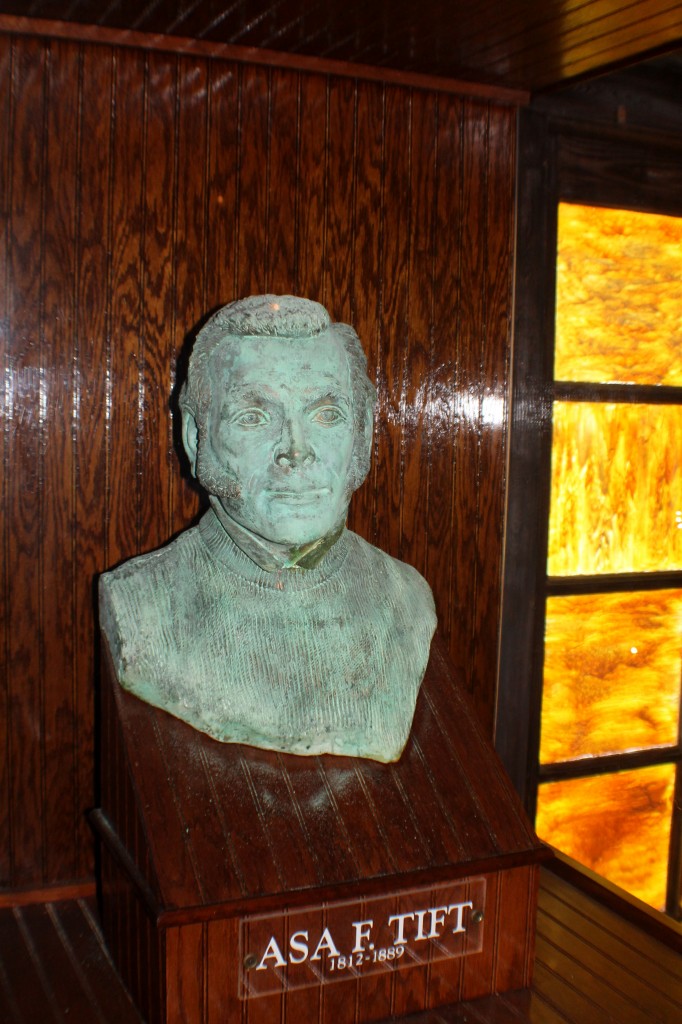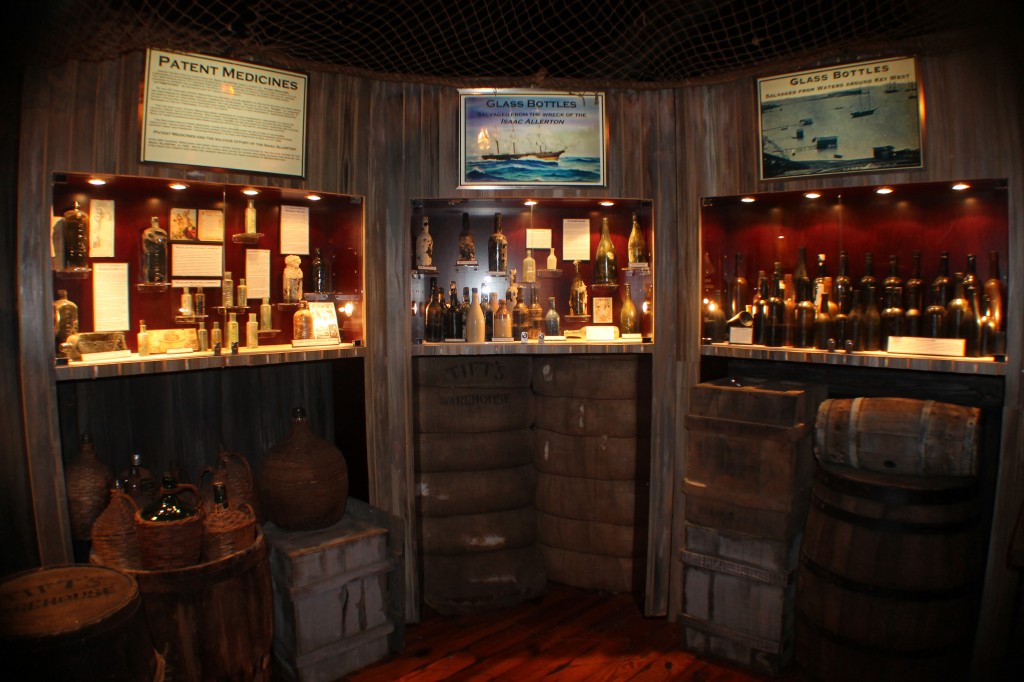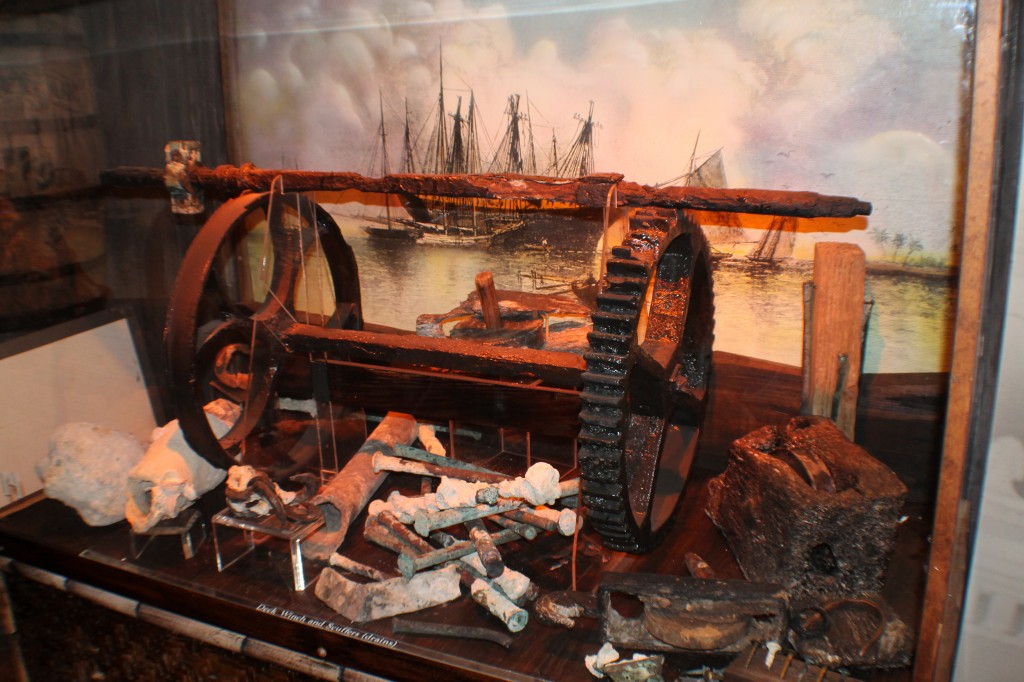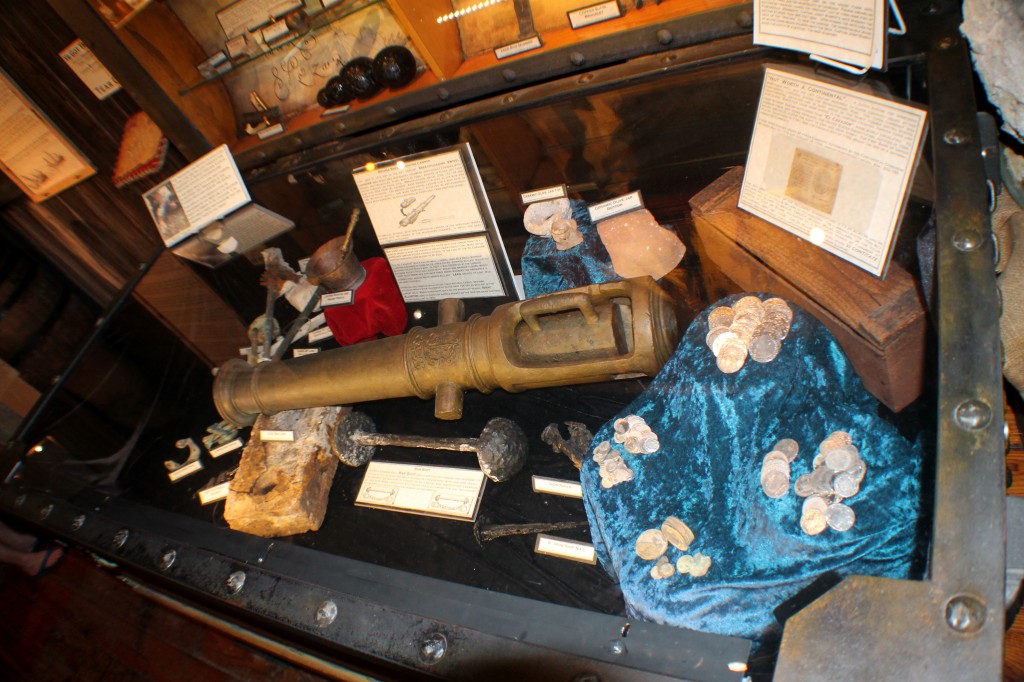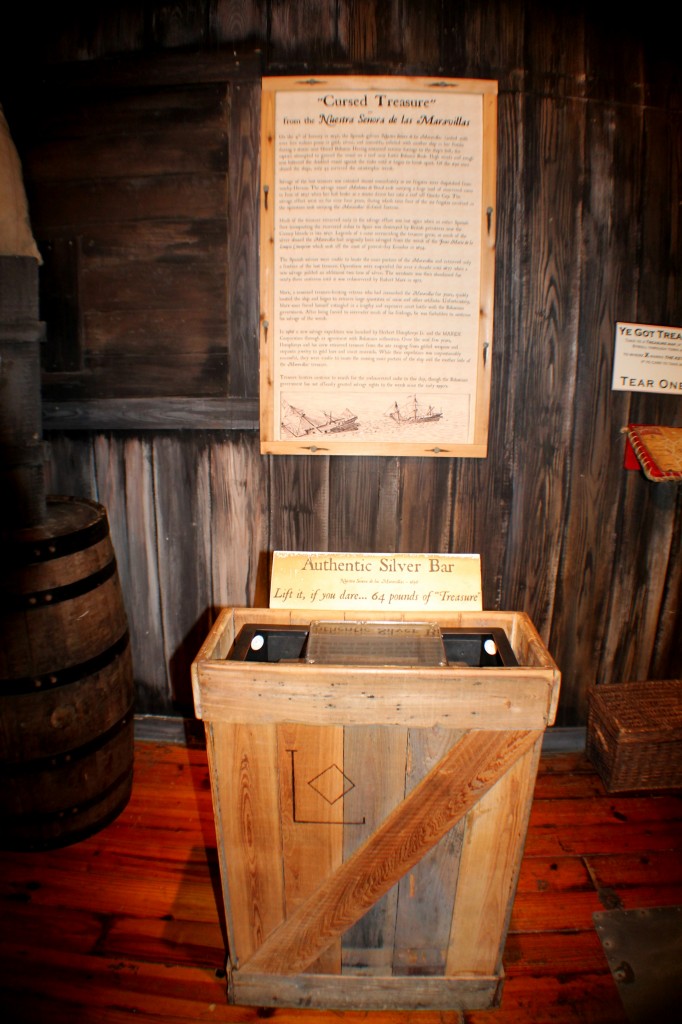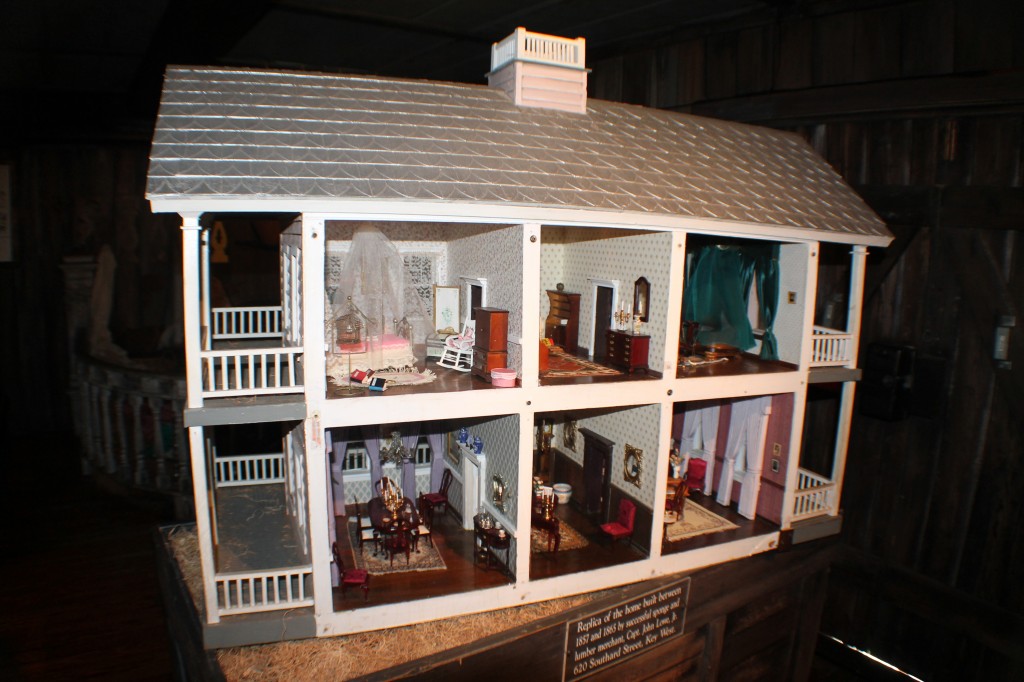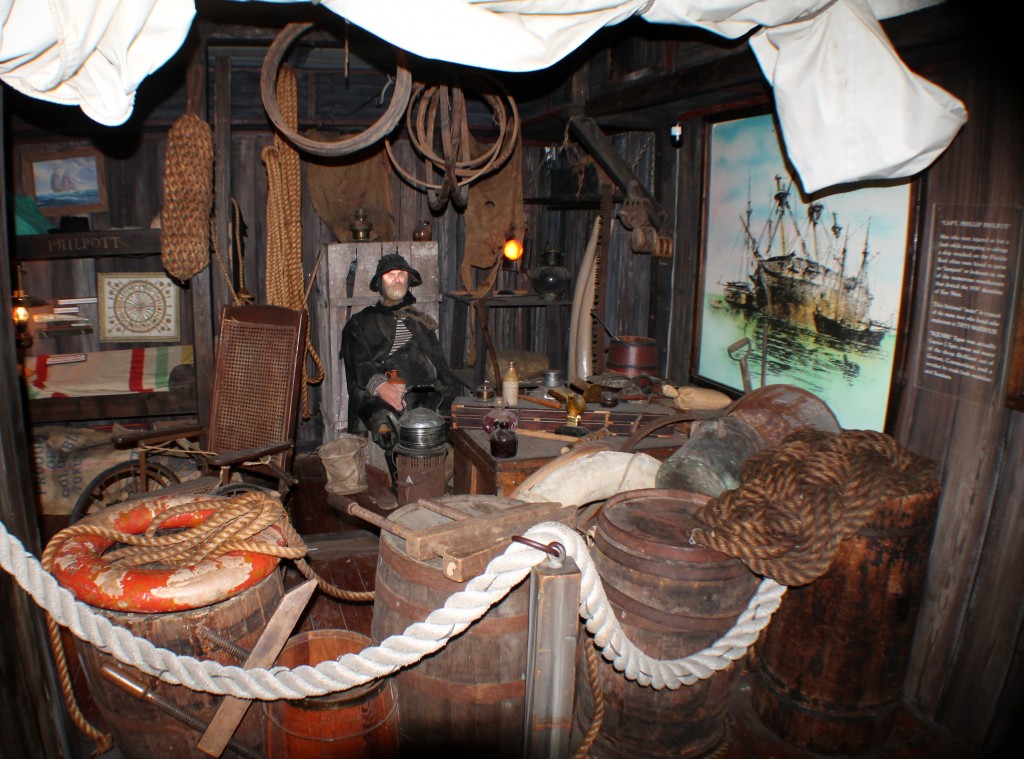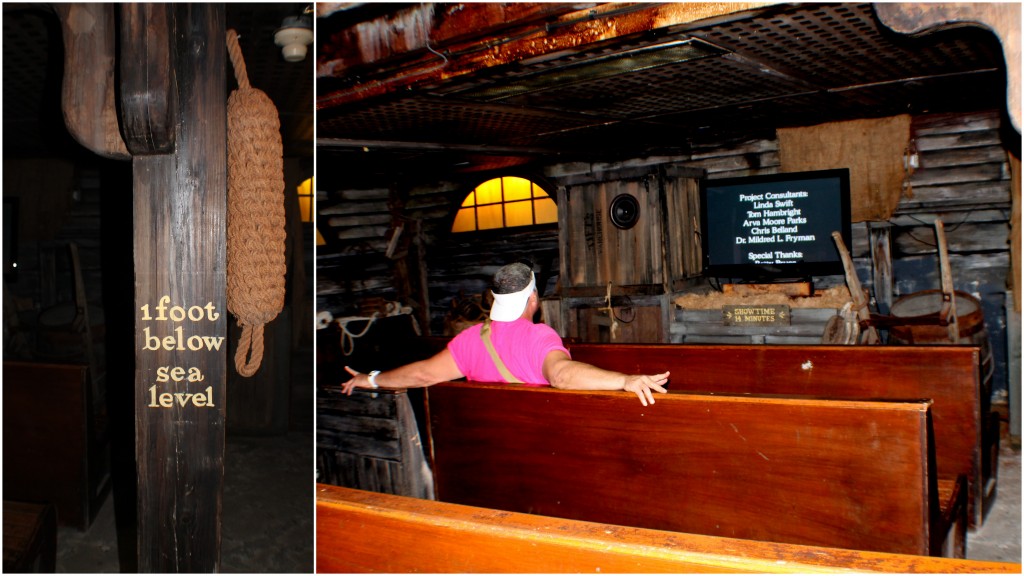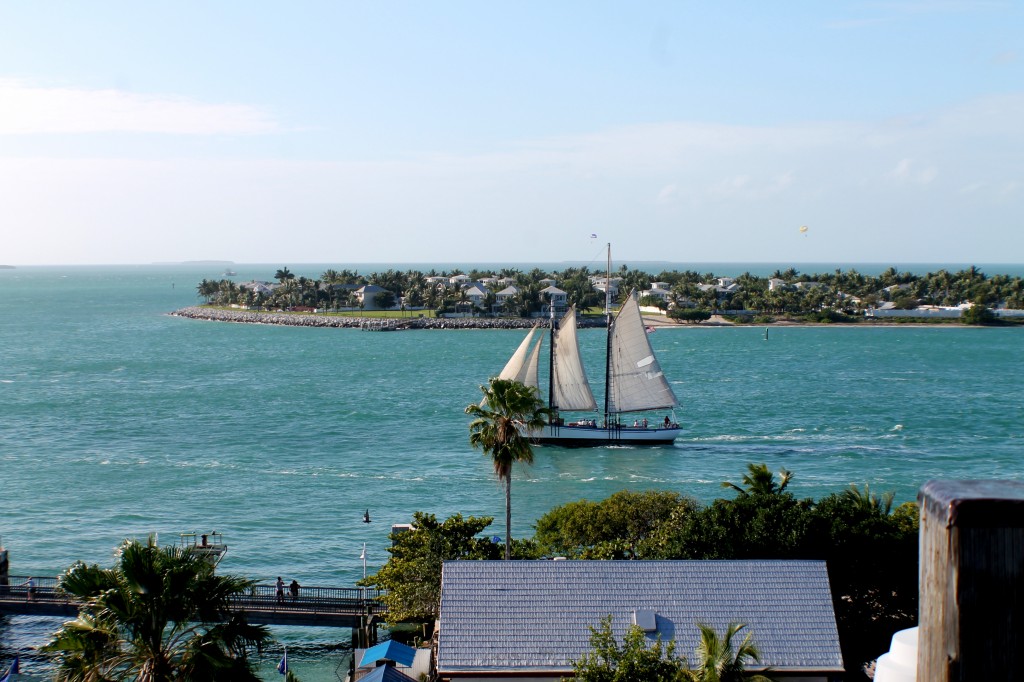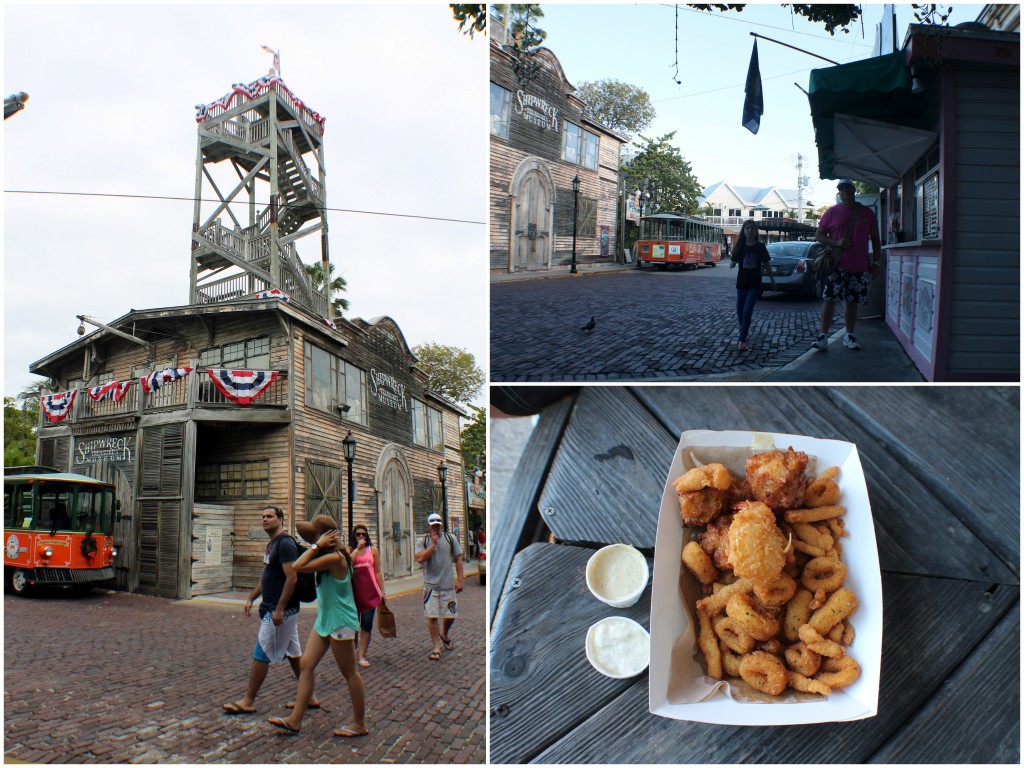Being in Key West, we couldn’t miss the Shipwreck Treasures Museum in Mallory Square right across from the Aquarium. The museum itself is a re-creation of a 19th-century warehouse built by wrecker tycoon Asa Tift. He was one of the most successful wreckers in Key West. He built the home that would later become the Ernest Hemingway Home.
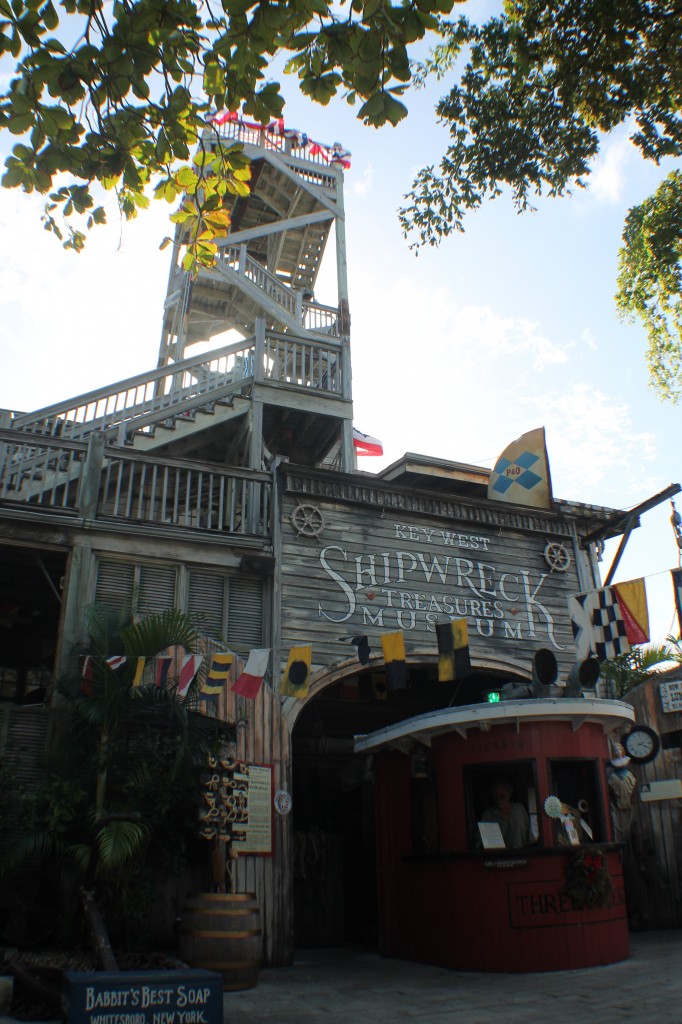 The tour starts in the museum’s yard, where the tour guide portraying Tift, tells the story from his point of view explaining how this unusual industry provided for the entire island and made Key West the richest city per capita in the United States at the time.
The tour starts in the museum’s yard, where the tour guide portraying Tift, tells the story from his point of view explaining how this unusual industry provided for the entire island and made Key West the richest city per capita in the United States at the time.
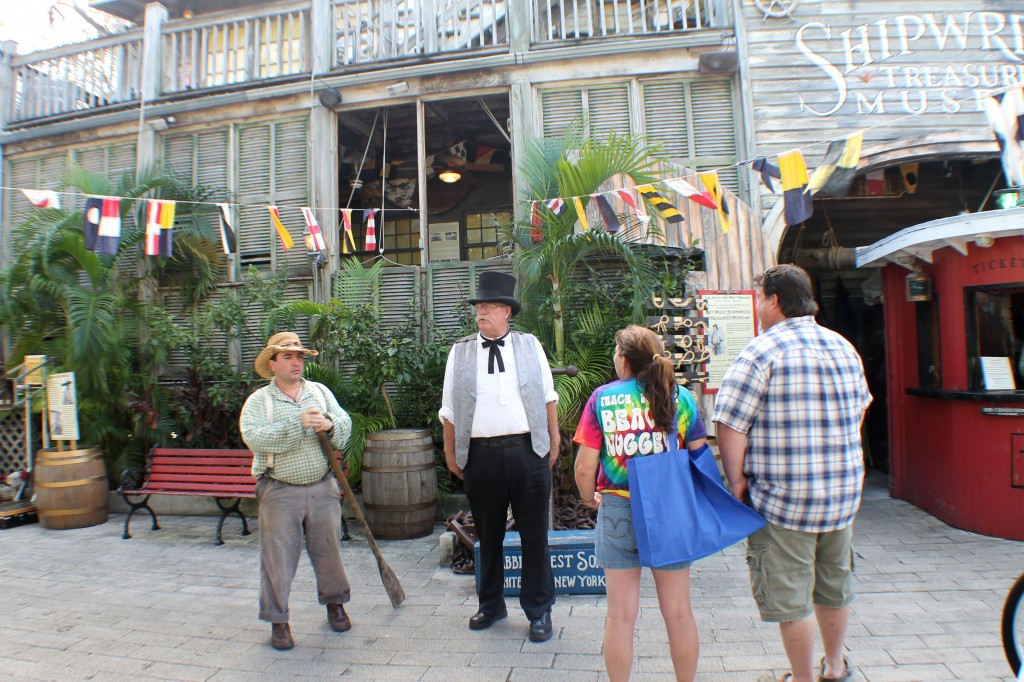
A story continues inside the museum and then guests can explore the museum on their own. I found the story quite interesting. Here are the highlights of the story.
At the time when ships ruled the seas, many vessels passed by the island of Key West. In the treacherous waters of the Florida Reef, a ship was lost at least once per week. Men who made their living as wreckers patrolled the area by boat and from land, watching from observation towers.
When a wreck occurred, the watchmen would shout out “Wreck Ashore!” and wreckers would race to the scene. The salvaged goods were then sold at auction in Key West, with a hefty profit going to the wreckers. The work was dangerous, but the great rewards for hard work attracted many newcomers to the town. This tremendous growth at that time gave Key West the largest population in the state of Florida.
On display are many of the treasures from the wrecks of the Isaac Allerton. On the night of August 28, 1856, the ship was caught in a hurricane, and sank in Hawks Channel. The crew escaped onto longboats, where they were rescued by Key West wreckers. The ship sank to a deep depth of five fathoms, making it impossible for wreckers to salvage everything. But what they did salvage resulted in $50,000 in profits after items were auctioned.
In 1985, the wreck was rediscovered by a group of local divers who had been searching for the Atocha wreck. Newer technologies allowed for more artifacts to be salvaged. The Key West Shipwreck Museum features the real artifacts that were salvaged from the wreck after this rediscovery. On display are glass bottles and patent medicines salvaged or found in waters of Key West.
Isaac Allerton, the ship.
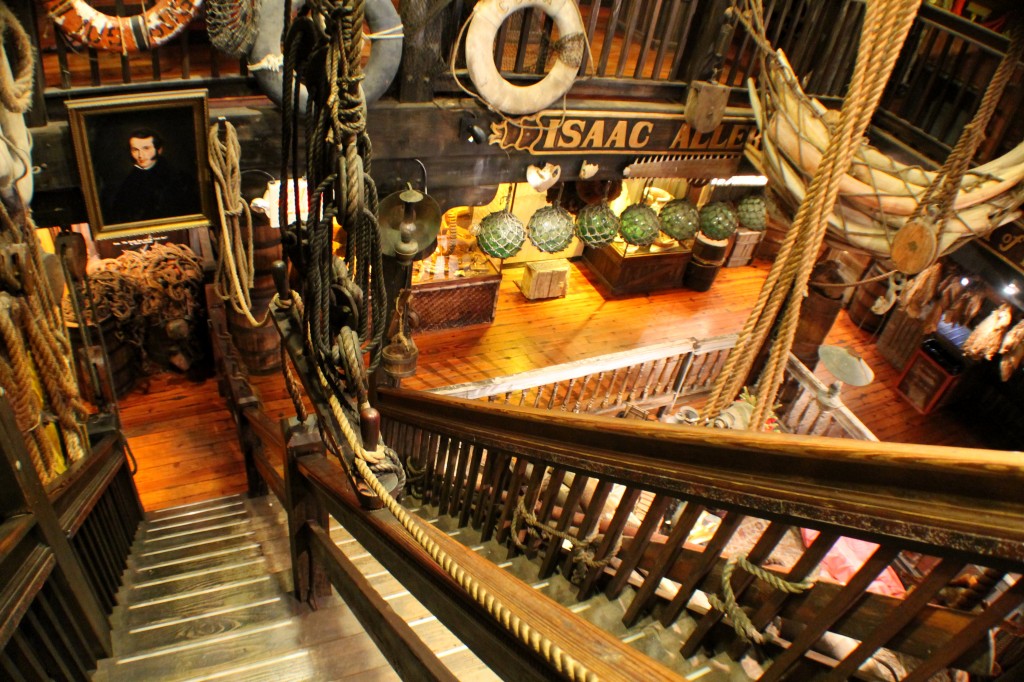
The salvage industry was very profitable and many people got rich in the business. In one case, a ship carrying a load of one hundred pianos has been wrecked and suddenly lots of people in Key West had pianos!
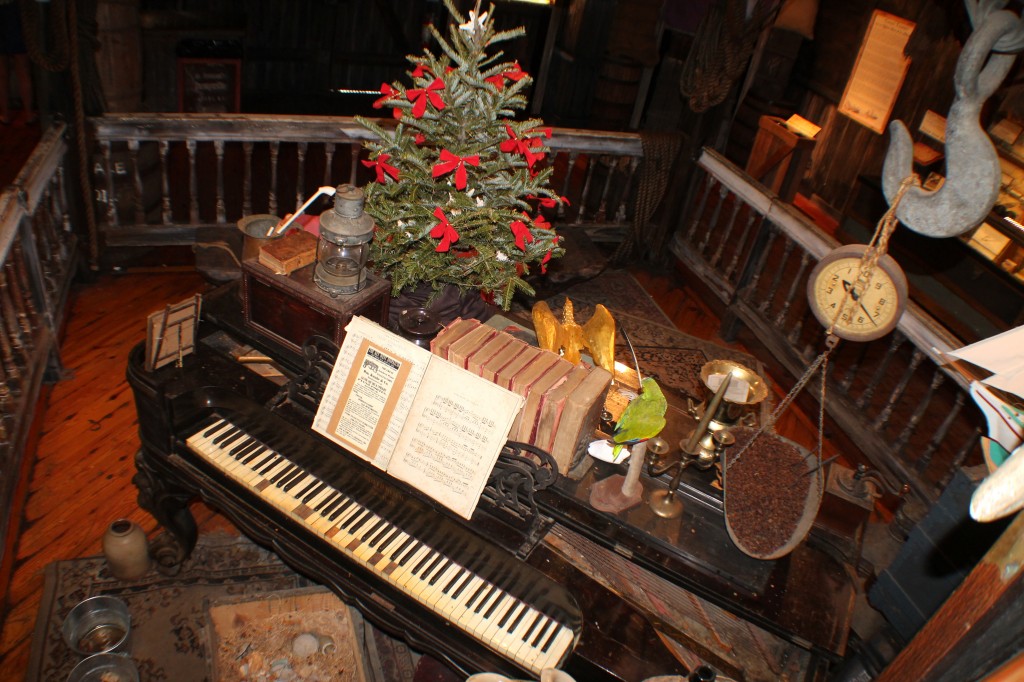
Here are Cob Coins from the 1733 Spanish Plate Fleet which was lost in a terrible hurricane off the coast of Florida.
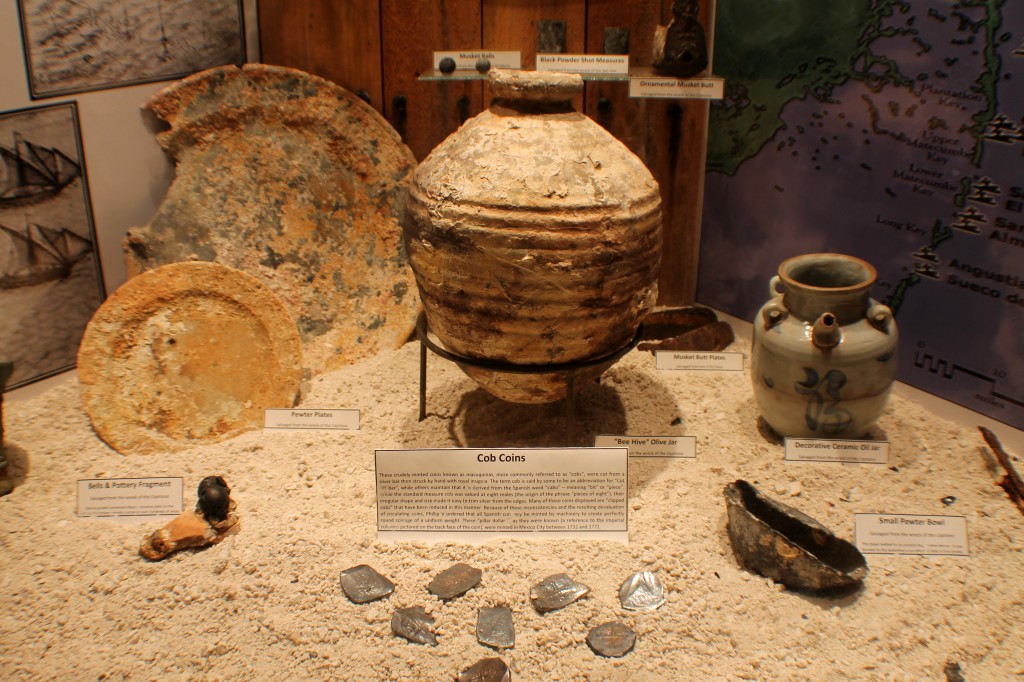
The El Cazador, a Spanish brigantine of war, was lost without a trace in the winter of 1784 while on route from Vera Cruz Mexico to the port of New Orleans. The wreck site was accidentally discovered on August 2, 1993 by a fishing vessel working the area. The treasure of the El Cazador, consisting of over 400,000 Spanish 8 reales and an equal amount of smaller denomination Spanish colonial coins from the Mexico City mint, was intended to stabilize the Spanish monetary system in colonial North America. Her loss contributed to Spain’s eventual conveyance of Louisiana to France’s Napoleon in 1800. The rest is history, as three years later in 1803, Napoleon of France sold Louisiana to the United States, instantly doubling the size of the country.
Besides the many artifacts from the Isaac Allerton, the museum also displays relics from sunken Spanish galleons. There is the heavy bar of silver that was salvaged from the Atocha Nuestra Senora de las Maravillas (lost in 1656), which visitors are encouraged to try and lift.
The museum offers a souvenir map to the quests.
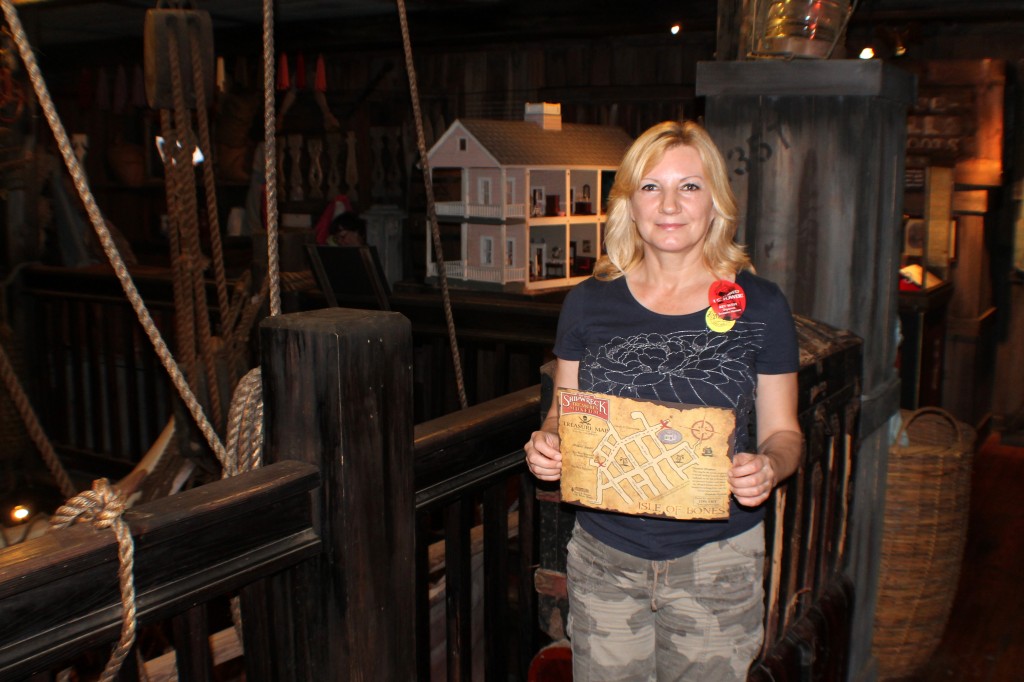
Replica of the home built between 1857 and 1865 by successful sponge and lumber merchant, Capt. John Lowe, Jr. 620 Southard Street, Key West.
Capt. Phillip Philpot is telling his legendary wrecking story
An interesting and educational movie about the shipwrecking industry is offered in the basement of the museum. It is filled with interviews, film clips and underwater footage. The basement is one foot below sea level. This is the reason that houses in Key West don’t have basements.
We also climbed to the top of the 65 foot captain’s observatory tower to catch a stunning view of Key West, knowing that the wrecking captains of the 19th century watched the reef for wrecks from the same tower.
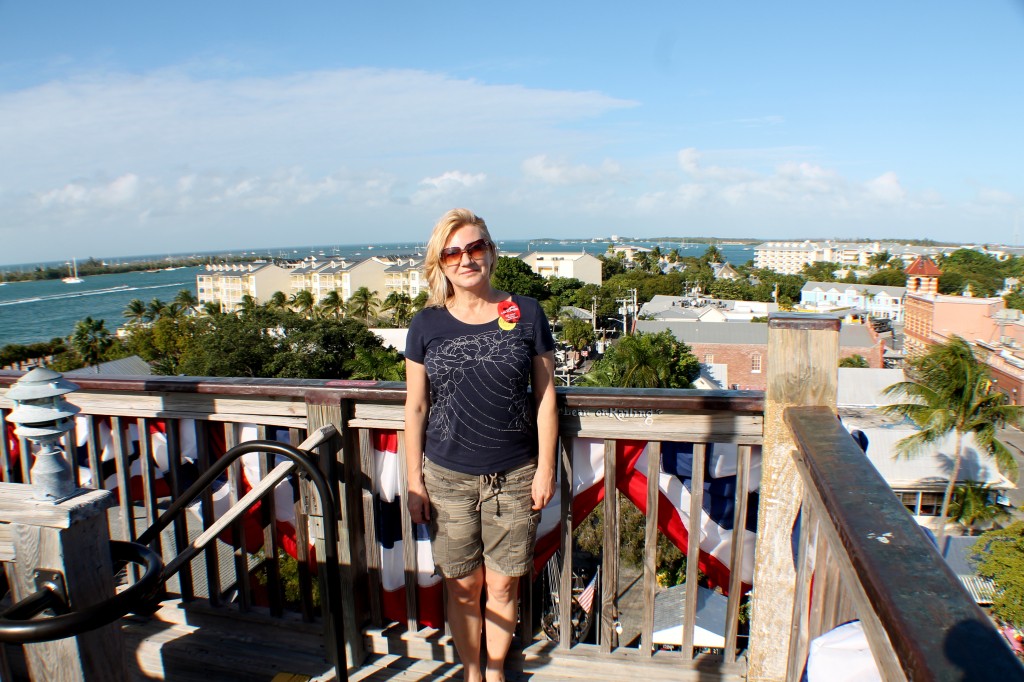
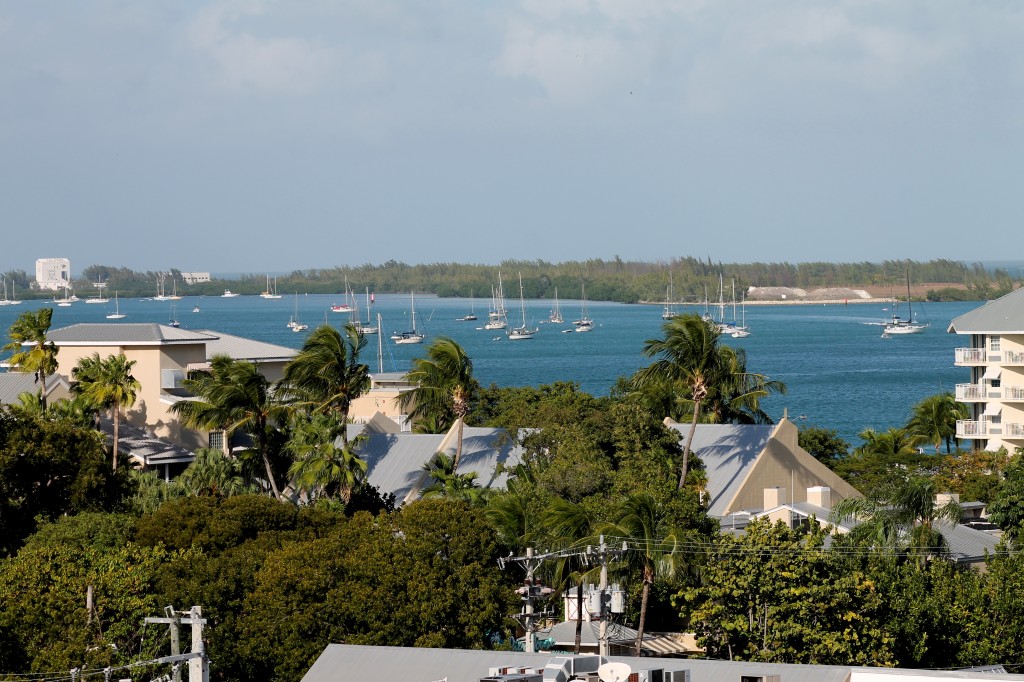
Sunset Key Island looks beautiful and very peaceful.
Of course, we tried famous Key West conch fritters. I am not a conch fan, but it was pretty good. They sell it in the little kiosk near the Shipwreck museum and there are places outside to sit and eat.
